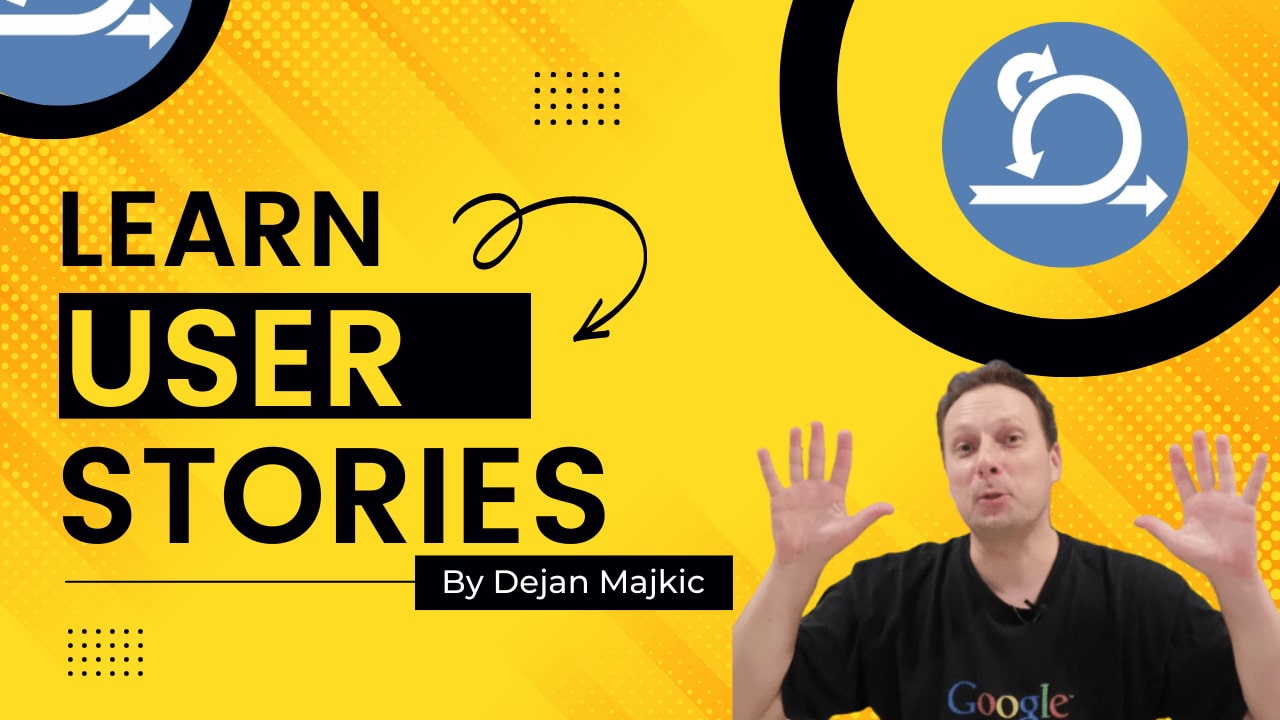User Stories, Examples, and Free Template
Introduction to User Stories
In the realm of Agile methodologies, Scrum stands out as a robust framework that champions collaboration, adaptability, and iterative progress. At the heart of Scrum lies the concept of User Stories, a potent tool for translating end-users needs into actionable development tasks.
This comprehensive guide aims to demystify User Stories, exploring what they are, their structure, benefits, and how seamlessly they integrate into the Scrum framework.
The Video above provides additional context to the User Stories in Scrum. Please watch it before you proceed further.
What is a User Story?
In essence, a User Story is a brief, user-centric narrative that encapsulates a specific feature’s functionality and the value it brings to the end-user. Crafted in plain language, these stories serve as a crucial bridge between stakeholders and development teams, fostering a shared understanding of project requirements.
User Story Structure
A User Story typically follows a straightforward template:
“As a [user role], I want [an action] so that [benefit/value].”
Breaking down the elements:
- User Role: Identifies the user or stakeholder in focus.
- Action: Defines the desired functionality or action.
- Benefit/Value: Specifies the advantage or value the user gains from the completed feature.
User Story Example
Consider the following example:
“As a project manager, I want a visual progress dashboard so that I can quickly assess project status and make informed decisions.”
1. User Role
“As a project manager,” – This identifies the user or stakeholder for whom the feature is intended. In this case, it’s a project manager. The “As a” part sets the stage for understanding whose perspective the User Story represents.
2. Action
“I want a visual progress dashboard” – This part describes the specific functionality or action the user is seeking. In this example, the project manager wants a visual progress dashboard. This could include charts, graphs, or other visual representations that provide a quick overview of the project’s status.
3. Benefit/Value
“so that I can quickly assess project status and make informed decisions.” – This component outlines the benefit or value that the user (project manager, in this case) will gain from the completed feature. The project manager seeks the visual progress dashboard to quickly assess the project’s status, enabling them to make well-informed decisions promptly.
Explanation of this example
In this User Story, the project manager is expressing a need for a specific tool – a visual progress dashboard. The purpose of this tool is to facilitate the quick assessment of the project’s status. The project manager recognizes the value of having a visual representation of project progress, which will empower them to make informed decisions in a timely manner.
Why is it Effective?
This User Story is effective because it clearly articulates the who, what, and why. It identifies the user, describes the desired functionality, and explains the benefits of having that functionality. This level of clarity allows the development team to understand the user’s needs and the value they expect from the feature, guiding the development process effectively.
Potential Tasks
Breaking down this User Story into tasks for the development team might involve designing the visual dashboard, implementing the necessary data integrations, and ensuring that the dashboard is easily accessible to the project manager.
Bonus of Having Short and Concise User Stories
The beauty of short and concise User Stories lies in their manageability. They are easier to comprehend, estimate, and implement, fostering a streamlined development process. Embracing brevity encourages continual communication, enabling efficient planning, prioritization, and adaptability.
How to Implement User Stories in the Scrum Framework?
- Backlog Creation: Add User Stories to the prioritized Product Backlog.
- Sprint Planning: Select User Stories for the upcoming Sprint during planning sessions.
- Task Breakdown: Break down User Stories into manageable tasks for the development team.
- Daily Standups: Discuss progress and address challenges in daily standup meetings.
- Review and Retrospective: Review completed User Stories with stakeholders and conduct retrospectives for continuous improvement.
Conclusion
As you can see, taking advantage of User Stories is pivotal. They foster collaboration, enhance communication, and ensure your development efforts align with user needs.
To facilitate your User Story implementation, we’re excited to offer free User Stories Templates. Simply shoot us an email at agileandscrummasterclass@gmail.com with the subject line “User Stories Templates,” and elevate your Scrum experience today!
Stay updated with Agile and Scrum by subscribing to our newsletter down below or regularly following our Scrum Blog.
